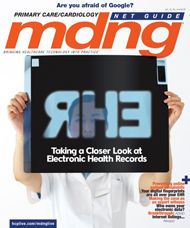CHIP-ing Away at Old Ideas
The Informatics Program at Children's Hospital Boston (CHIP) recently organized a workshop at the Harvard Medical School Center for Biomedical Informatics in order to "define a set of core principles" that should guide health IT development. Based on concepts and ideas previously proposed by two workshop participants in a NEJM article, the principles call for a health IT infrastructure modeled after the successful iPhone approach of a general purpose platformthat supports a collection of simple applications. A summary statement released at the conclusion of the workshop listed the 10 principles that will inform the development of an infrastructure based on "substitutable" components, which would be "a highly promising way to drive down healthcare technology costs, allow flexibility, support standards evolution, accommodate differences in care workflow, foster competition in the market, and accelerate innovation."

Such an approach to health IT development and implementation based on modularity, scalability, flexibility, transparency, and customizability would be a major departure from the prevailing model of all-in-one, proprietary vendor products. Although the appeal and success of the iPhone model is undeniable, the notion of applying it to healthcare IT raises several questions, some of which are addressed in the CHIP workshop statement of principles: Who would develop the open software platform that would form the basis of any modular system? Who determines the standards and protocols to be used? How would certification and/or regulation of the platform (or platforms, if multiple developers enter the "market") be handled, and by whom? (The statement authors suggest this would be done "through professional societies.") How would applications be delivered?
Would such an approach be compatible with the processes already put in motion by the HITECH Act? The parallel (though connected) discussions about "meaningful use" and "certified EHR" are constantly moving toward resolution. The "Meaningful Use" Workgroup of the Health Information Technology Policy Committee recently presented initial recommendations for a definition of "meaningful use" of health IT, which seem conducive to a modular approach to health IT. And, although the National Coordinator for Health Information Technology has not provided final criteria defining "certified EHR," it is widely speculated that the CCHIT certification process may be used at least in part. Interestingly, the CCHIT recently held "town calls" seeking "stakeholder input on new paths to certification of electronic health record (EHR) technologies, with the goal of supporting more rapid, widespread adoption and meaningful use." These "new paths to certification" in part reflect a growing awareness that greater flexibility is needed if we are to meet national goals for health IT adoption and use.
Thank you for reading.
Mike Hennessy
